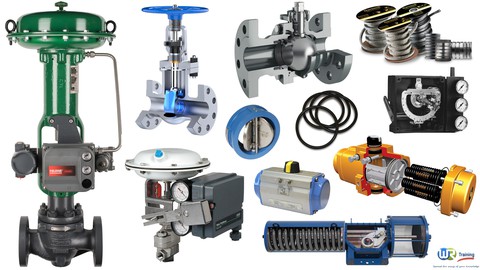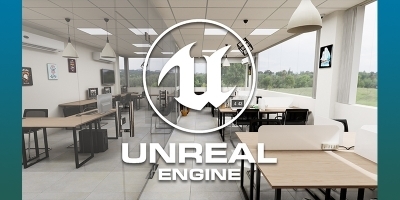Mô tả
Valves and control valves of various designs and applications are encountered nowadays throughout refining, petrochemical and process industries as well as in power generation and environmental engineering.
This 12H masterclass is designed to provide you with a complete understanding of construction details and functioning of :
Valves (gate, globe, ball, plug, butterfly, diaphragm, needle, check, piston, pinch...)
Control valves (two-port, three-port)
Valve actuators (diaphragm, piston, rack and pinion, scotch yoke...)
Valve positioners
Safety and Pressure Relief Valves
Steam traps (float, thermostatic, thermodynamic, inverted bucket...)
Strainers (wye, basket...)
This understanding is a prerequisite for a successful operation of your plant and piping system.
This 12H masterclass includes extensive graphics, 3D animations and cross-sectional views to give you a virtual practical exposure on valves.
The masterclass is organized into 4 parts :
Part I : Valves
Part II : Control Valves, actuators and positioners
Part III : Sizing and Selection
Part IV : Valves in engineering drawings
In Part I, you will :
Discover the major types of valves used in the process industry
Learn their components, their function & their operation
Have the opportunity to dismantle many valves and assemble them using 3D models, cross-sectional views and 3D animations
In Part II, you will find valuable insights into the working principles and construction details of the following equipment:
Control valves (sliding stem and rotary / fast opening, linear and equal percentage)
Mixing and diverting 3-port control valves
Diaphragm actuators ("air-to-push-up" and "air-to-push-down")
Piston actuators (Single Acting and Double Acting / Fail Open (FO) and Fail Closed (FC))
Rack-and-pinion actuators (Single Acting and Double Acting / Fail Open (FO) and Fail Closed (FC))
Scotch Yoke actuators (Single Acting and Double Acting / Fail Open (FO) and Fail Closed (FC))
Pneumatic positioners (force balance, motion balance)
Digital positioners
I/P converters
...
The course then proceeds through a series of process examples and solved problems that require you to:
Dismantle and assemble various types of control valves and actuators using 3D and 2D models
Identify the net effect of various control valve/actuator assemblies (direct acting, reverse acting, fail open, fail close...)
Convert an actuator from Single Acting to Double Acting configuration and vice versa
Convert a control valve/actuator assembly from a Fail Closed (FC) to a Fail Open (FA) configuration and vice versa
Construct the installation curve for a control valve
Determine flowrate and pressure drop through control valves for different valve lifts
Match the valve characteristics to the given application
Examine the effect of selecting a control valve larger than necessary
Examine the effect of differential pressure on the valve lift and actuator operation
Determine when a positioner should be fitted
...
This will help you develop the necessary skills to ensure your process plant and piping systems run smoothly.
Part III Sizing & Selection is designed around a series of practical examples which we work through to a solution. This valuable part of the course is an essential guide to understanding the valve sizing procedure.
In this section, we will present a step-by-step sizing methodology. We will show you how to proceed in the sizing of a valve in the daily practice, how to determine the flow coefficient (Cv) when selecting a control valve size, how to predict the maximum flow rate that a selected valve will pass or how to determine the pressure differential that a selected valve will exhibit...
You will learn from our industrial experience what we wrongly calculated during project startup, debottlenecking and commissioning.
This should undoubtedly help you minimize the mistakes in the sizing and selection of your valves.
Included in this course is access to a valuable Valve Sizing Excel Spreadsheet. This tool will help you perform all the calculations that we will discuss further ahead in the course. It has all the sizing equations, numerical constants and other parameters built right in.
Next in Part IV, we will introduce you to valve symbols and valve representations in engineering drawings, such as Piping & Instrumentation Diagrams (P&IDs').
Standards and conventions that apply to valves and their accessories will be discussed in details. You will learn how valve status and valve failure modes are depicted in engineering drawings.
Lastly, we have included in this masterclass a technical quiz (500+ questions) to help you test your knowledge and emphasize the key learning points.
The quiz includes:
True/False questions
Multi-choice questions
Images, cross-sectional views
Solved problems
And much more...
So when you think you’ve got a good grasp on a topic within the course, you can test your knowledge by taking the quiz. If you pass, wonderful ! If not, you can review the videos and notes again or ask us for help in the Q&A section.
We promise you that even though this is a technical course, you can watch it easily, without pain, but with comprehension, and that after completing it, you won't be an experienced design engineer or instrument technician but you will be prepared to become one if that is what you like and persist to be.
Thank you again for your interest in our online courses. It is a privilege to serve you and make sure that you're learning valuable information with us.
WR Training
Spread the wings of your knowledge
-------------------------------------------------------------------
ABOUT THE VALVE SIZING SPREADSHEET
The Valve Sizing Excel Spreadsheet provides well organized technical data in form of spreadsheet calculations indispensible for anyone involved in the sizing of valves. It presents formulae and data for :
Valve flow coefficients Cv
Flow of fluids through valves
Pressure drop through valves and attached fittings
Valve Reynolds Number calculations
Predicting maximum flow through valves in choked conditions
Representative values of valve capacity factors
And much more...
The spreadsheet includes two worksheets :
Sizing for liquids (incompressible fluids)
Non vaporizing flow conditions
Choked flow conditions
Sizing for vapors and gases (compressible fluids)
INSTRUCTION TO DOWNLOAD THE VALVE SIZING SPREADSHEET
1. Upon enrolling in, expand the last section "DOWNLOADABLE RESOURCES"
2. Under the lecture "Download me", click on the folder "Resources" => A list of downloadable files will appear
3. Click on the "Valve Sizing Spreadsheet" file
4. A download window will pop-up. Select the location where you want to save the Excel file
5. Once downloaded and saved on your computer, you can start using this valuable Workbook
IMPORTANT NOTES : VALVE SIZING SPREADSHEET
We assume that Microsoft Excel is installed on your computer and that you have basic knowledge of using Excel
The Valve Sizing Excel Spreadsheet includes Visual Basic for Application function subroutines (VBA). Macros must be enabled for them to work
DISCLAIMER
The Valve Sizing Excel Spreadsheet is provided by WR Training "as is" and any express or implied warranties, including, but not limited to, the implied warranties of merchantability and fitness for a particular purpose are disclaimed. In no event shall the Copyright owner or contributors be liable for any direct, indirect, incidental, special, exemplary, or consequential damages (including, but not limited to, procurement of substitute goods or services, loss of use, data, or profits, or business interruption) however caused and on any theory of liability, whether in contract, strict liability, or tort (including negligence or otherwise) arising in any way out of the use of this spreadsheet, even if advised of the possibility of such damage.
Bạn sẽ học được gì
Understand valves and control valves working principles for successful operation of your plant and piping systems
Understand valve construction details (bonnet, stem, disk, seat, packing, body, etc)
Know the characteristics and applications for each valve type (ball, plug, gate, pinch, butterfly, diaphragm, check, needle...)
Know how to choose the correct valve for a certain application
Know how to dismantle and assemble all types of valves using 3D and 2D models
Identify and know the principles of operation of common valve actuators (pneumatic, hydraulic, electrical, etc)
Understand how single acting and double acting pneumatic actuators work through graphics and 3D animations
Understand the principle of fail open (FO) and fail close (FC) actuators
Know how to convert a single acting spring return actuator to a double acting actuator and vice versa
Know how to convert a fail close actuator to a fail open actuator and vice versa
Be more innovative in your solutions to valve and control valve problems
Have an organized approach to the procedure of valve sizing in accordance with the ANSI & ISA recommendations
Be able to size valves for any flow conditions likely to be found in a process plant
Have a general notion about the confidence to be placed in the sizing result conclusions
Understand safety valve manufacturers’ literature better and understand their jargon
Become more aware of the potential benefits and pitfalls of the currently available safety valve technology
Understand the concept of "Air-to-push-up" and Air-to-push-down"
Understand the concept of "direct-acting" and "reverse-acting"
Know how to convert a fail close actuator to a fail open actuator and vice versa
Understand the concept of valve flow coefficient "Cv" and familiarize yourself with the various units
Know how to determine flowrate and pressure drop through control valves for different valve lifts
Know how to match the valve characteristics to the process
Know how to construct the installation curve for a given control valve
Understand the effect of selecting a control valve larger than necessary
Understand the effect of differential pressure on the valve lift and actuator operation
Differentiate between fast opening, linear and equal percentage valve characteristics
Understand how valve positioners operate
Know the different types of valve positioners (P/P, I/P, force balance, motion balance, digital…)
Understand when a positioner should be fitted
Understand the working principles of I/P converters and how they are used in control valves
Put your knowledge to the test at the end of each section with a valuable technical quiz (500+ questions and solved problems)
Download our valuable Valve Sizing Excel Spreadsheet (included in this course free of charge)
Yêu cầu
- Some engineering or field knowledge is preferable but not mandatory. All the concepts are explained in depth using an easy to understand language to allow students to build their knowledge from the ground up
- Please note that the mathematics in this course is undemanding. All the work can be done with a hand-held calculator with powers, roots and log functions.
- To further help you in this task, the course is accompanied with a Valve Sizing Spreadsheet. The Valve sizing spreadsheet will help you perform all the calculations that we will discuss further ahead in the course. It has all the sizing equations, numerical constants and other parameters built right into it.
- We assume that Microsoft Excel is installed on your computer and that you have basic knowledge of using Excel.
Nội dung khoá học
Viết Bình Luận
Khoá học liên quan

Đăng ký get khoá học Udemy - Unica - Gitiho giá chỉ 50k!
Get khoá học giá rẻ ngay trước khi bị fix.

















Đánh giá của học viên
Bình luận khách hàng